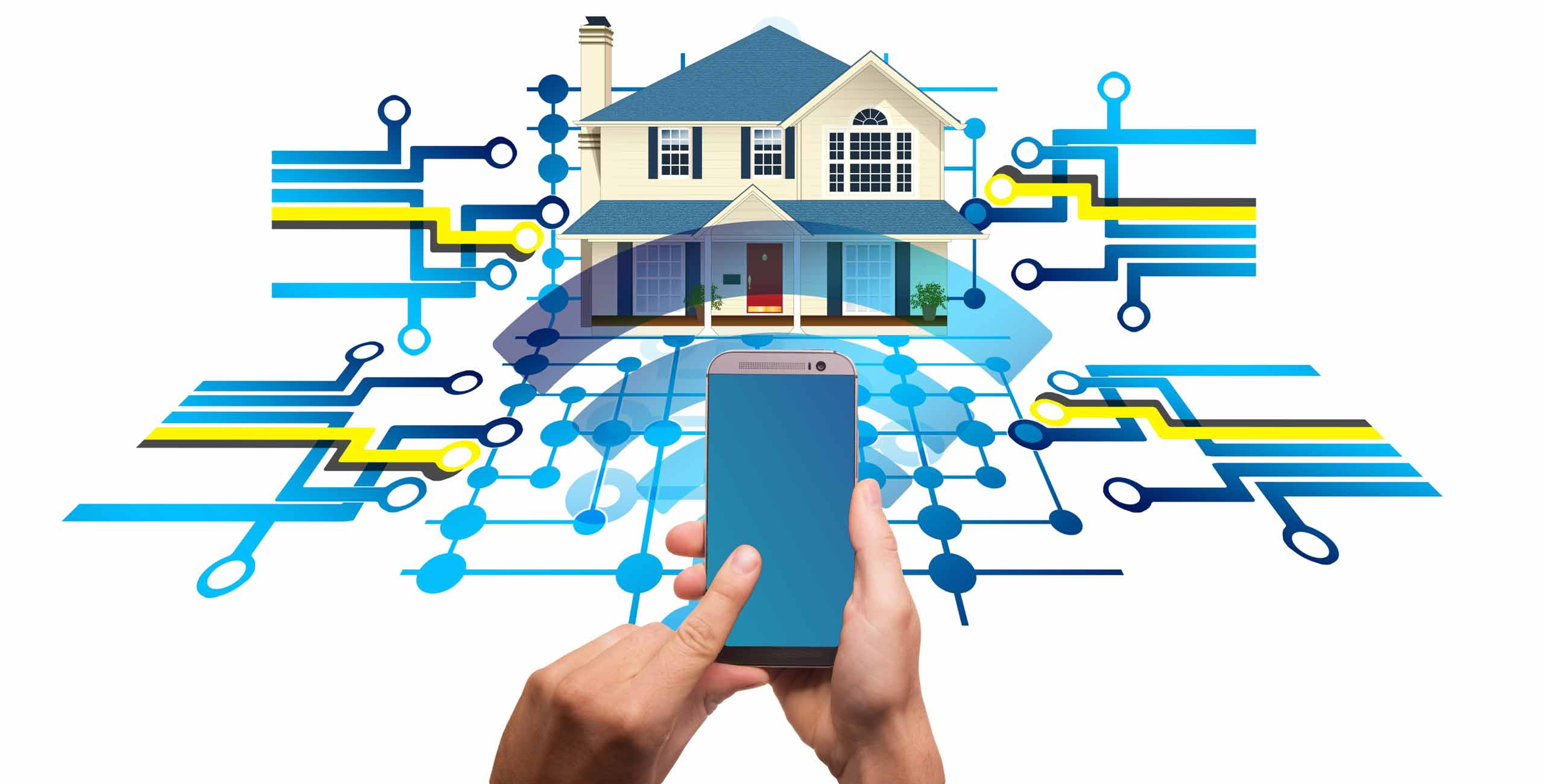Innovation has seamlessly woven new smart home technology into the very fabric of our homes. With the inclusion of smart devices like internet-connected Ring doorbell cameras, Nest thermostats, and even robotic vacuums, it feels like we’re inching closer to a real-life version of ‘The Jetsons’—minus the flying cars, of course.
We find ourselves well into the first quarter of the 21st century, and it’s safe to say that the average homeowner now interacts with smart internet-connected devices upon returning home. We call this interconnected web of gadgets the Internet of Things (IoT).
“From my Baby Boomer perspective, it’s reminiscent of the classic ’70s sci-fi movies that have now become a tangible reality, albeit without the flying cars.”
Today’s homeowners, akin to the futuristic vision in Hanna-Barbera’s ‘The Jetsons,’ can engage in live video communication with visitors at their doorsteps. Moreover, they can effortlessly lock or unlock their doors using smartphone applications, mirroring the conveniences portrayed in ’60s sitcoms.
What Lies Beyond?
Nearly everything we’ve witnessed in futuristic sci-fi movies is now within the grasp of enthusiastic homeowners. From AI-powered robotic vacuum cleaners and lawnmowers to advanced home surveillance systems, intelligent climate control, comprehensive ambient lighting control, hands-free smart faucets, toilets, and a multimedia entertainment experience that can span the entirety of your home—indoors, outdoors, and even within your showerheads.

What Does It Take to Make My Home Intelligent?
In reality, there’s no need for alarm; the technical principles are rather straightforward. The process of creating a smart home primarily involves integrating all household installations with the sole purpose of centralized control, typically achieved through a computer console or remote access via another computer or smartphone, usually facilitated by an internet-connected app.
Wired in a Wireless World?
Despite Nikola Tesla’s visionary goals, we still need to incorporate wiring into our homes, no matter how many wireless devices are connected to the internet. You’ll require a robust, secure, and redundant home network, commonly referred to as a LAN or local area network. This network serves as the backbone of your smart home, allowing your devices to communicate privately while sharing and receiving sensitive information. You’ve likely come across terms like ‘firewall’ and ‘encryption.’ These security measures play a vital role in safeguarding your data and devices from potential hacking threats.

Do Smart Homes Demand Smart Security?
Absolutely, they do. While it might sound redundant to secure a smart home with smart devices, that redundancy is the key. Modern automated home security systems go beyond merely protecting your home from intruders. They incorporate protection sensors that monitor for fire, smoke, leaks, CO2, and offer additional services like digital DVR cameras and cloud storage. Remote access control to entry devices, such as connected locks and video doorbells, is also part of the package. These systems operate in conjunction with redundancy support, including standby power backup, multiple access points for monitoring, and various communication methods like VHF radio, cellular, Bluetooth, Wi-Fi, cable, telephone services, and remote data storage backup.
Smart Kitchen and Beyond
Technology has revolutionized the most critical room in our homes—the kitchen. Now, kitchen appliances such as refrigerators, stovetops, ovens, dishwashers, and even coffee makers can be monitored and controlled from anywhere, even while driving away from home. Imagine receiving notifications from your fridge when it’s time to restock groceries before you even arrive back from work. Laundry appliances will alert you when your laundry is ready, sparing you the need for constant checking.
The Smart Bath Experience
Picture walking into a bathroom equipped with a voice-enabled Smart Mirror featuring a touch-screen, built-in video, and sound capabilities. Inside the toilet room, you’ll encounter an intelligent toilet, while the shower remembers your preferred water temperature and includes a built-in wireless Bluetooth speaker. We’ve reached a point where smart bathrooms offer an experience reminiscent of the Millennium Falcon.
Smart Entertainment: A Man Cave Dream
Not only have prices dropped significantly, allowing you to install an 85″ 4K monster in your basement for an NFL game night, but these screens can also seamlessly integrate into your smart home system. There are numerous ways to enjoy multi-room audio and video, facilitated by a centralized audio and video system that broadcasts music and video signals throughout your entire home. Wall/ceiling speakers and flat HDTV screens can be strategically placed to create a captivating entertainment experience.

Smart Energy Management
Connecting, controlling, and monitoring your entire home energy system in a smart environment may seem like something out of ‘Star Trek.’ By centralizing state-of-the-art HVAC controls with other energy-consuming smart appliances, you can automate and optimize your home’s environmental aspects. For some households, this means substantial savings, with solar-powered systems and battery backups potentially saving over $10,000 annually and even allowing you to sell excess electricity back to your utility company.
Is There a Bright Future for Smart Homes?
The influx of smart home devices shows no signs of abating. Significant investments by tech giants like Google, Apple, and Amazon have transformed the landscape, offering abundant opportunities for innovation. The global market for smart home devices continues to grow, with a projected year-over-year increase of 23.5%. Shipments of these devices reached 815 million in 2019 and are expected to surge to 1.4 billion by 2025, as per the International Data Corporation (IDC).
The expansion of the smart-home ecosystem will persist for years to come, closely tied to advancements in high-speed connections such as 5G and fiber optics. And who knows, perhaps Elon Musk will one day unveil the flying car we’ve all been waiting for.

 Facebook
Facebook
 X
X
 Pinterest
Pinterest
 Copy Link
Copy Link



